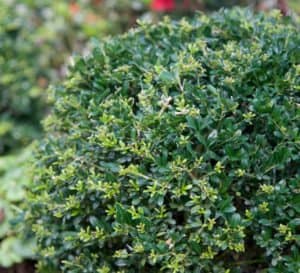Very few areas of the landscape lie in full sun or full shade. Planting beds commonly straddle areas of sun and shade or more likely, exposure shifts throughout the day as the sun traces its westerly path through the sky. Trees, rooflines and other structures cast shadows that move with the traveling sun. It can be difficult to create continuity through such shifting sun exposures. So how do we design gardens that thrive in these transition zones? The secret lies in plant selection and creative placement.
Study the Sun

When designing a planting for these transitional areas start by studying sun patterns. Sun exposure changes hourly as well as monthly. A bed that is fully shaded during March may receive quite a bit of sun in July as the sun’s angle changes with the seasons. Here are a few questions to ask as you study the landscape. Answering these questions will help you select the most suitable plants for a given area.
- Is the area predominantly sunny or shaded?
- Where does the hot afternoon sun strike the garden?
- How might these patterns change at different times of the year?
- What areas are shaded from intense afternoon sun?
- How many hours does the area receive full sun?
Plant Selection

While many plants are black or white with regards to sun exposure, that is they require either full sun or full shade, there is also a diversity of plants that thrive under more variable conditions. These are commonly labelled with descriptions such as “Full Sun to Part Shade” or “Part Sun to Shade”. So how do we best use these plants in a transitional area? Look back at your notes on sun exposure and do you best to match existing conditions to plant requirements.
- Areas receiving mostly sun or hot afternoon sun can support plants labeled “Part Sun” or “Full Sun to Part Shade”.
- Plants labeled “Part Shade” or “Part Sun to Shade” will be less tolerant of hot afternoon sun. They thrive in morning sun and afternoon shade or filtered light throughout the day.
- For many plants, bloom intensity may decrease as shade increases. That doesn’t mean you cannot plant bloomers in part shade, just know what to expect.
Continuity

One of the greatest challenges with transitional zones is the desire to carry a thread of plant material, such as a hedge or border, from sun to shade. In these situations, it is best to focus on foliage as variations in bloom from sun to shade may be quite evident. Shrubs that make the transition seamlessly include Miss Lemon™ Abelia and Low Rider™ Holly.
Repetition of plant material along a path or bed line is another way to create continuity through a garden. In a predominantly sunny garden, ‘Twilight’ Heucherella makes an ideal low-growing perennial for this purpose. If shade prevails, similar affects can be achieved with a carex variety such as EverColor® ‘Everoro’ Carex.
A successful design makes use of gradual changes for a more natural appearance. As such, it is important to avoid abrupt changes in plant material as we move from sun to shade. Porches, arbors and trees often cast shadows through the middle of a planting bed causing an abrupt shift from sun to shade and associated plant material. By weaving some plant materials between the more distinct sun/shade plant groupings we can soften the transition. For example, a design may carry a mass of Mountain Snow™ Pieris beyond the canopy of an understory tree or tuck groups of Indigo Frost™ Agapanthus into the shade of an entry porch.
Be creative as you design transition zones. You will be surprised how well plants from different exposure groups can mingle in the garden. You just might find some stunning combinations. Just be sure not to push the extremes. The closer a plant meets the sun exposure of a site the more productive it will be.








